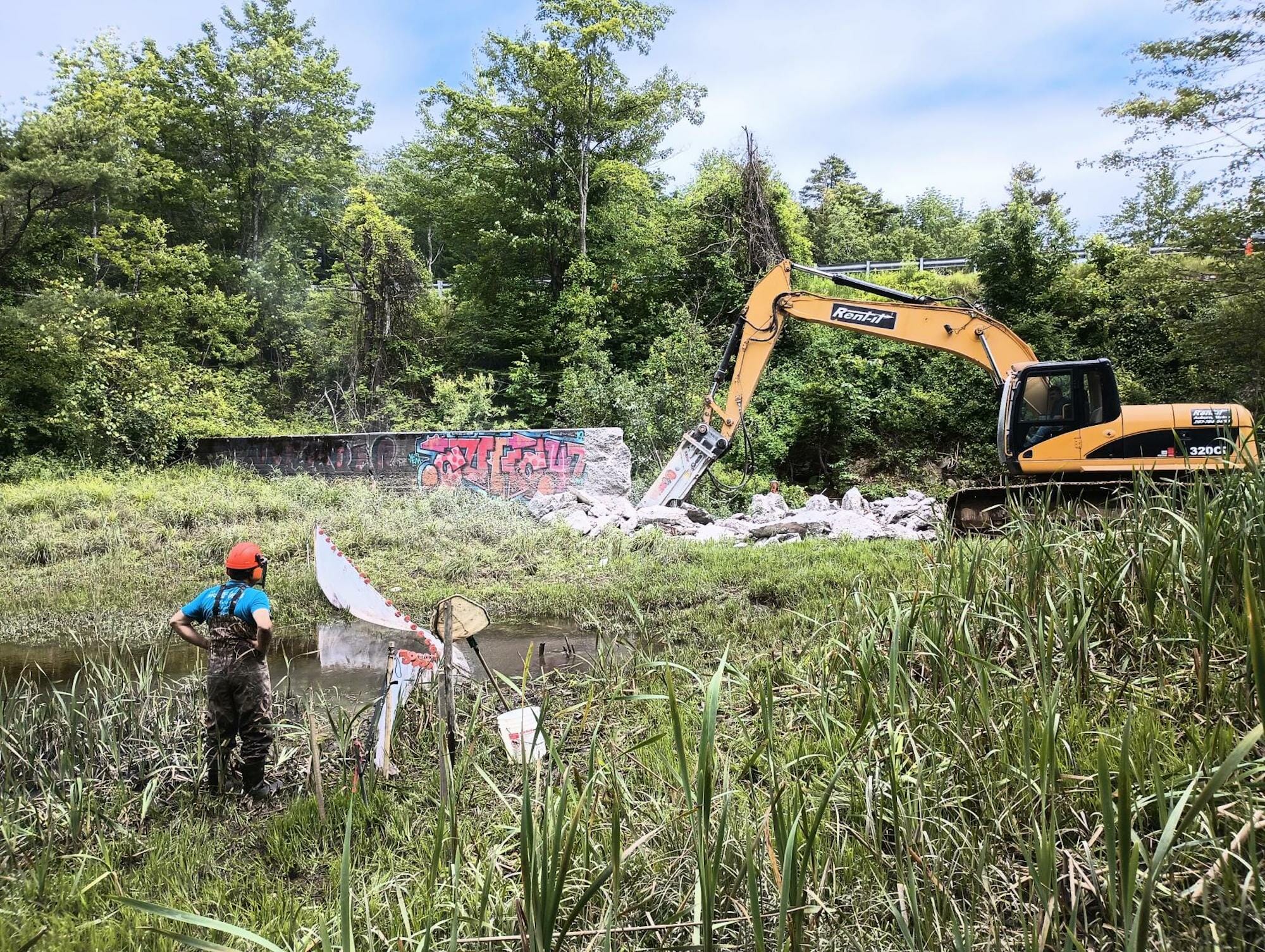In Freeport, Maine the rescue mission was launched with a single word.
“Trout!”
The operation was anticipated. Construction crews had just an hour prior knocked down a small dam on a tiny stream cutting through Freeport, Maine.
As water rushed through the newly formed breach — with a pump aiding the pond-draining effort — the small impoundment behind the dam was falling quickly. Volunteers waited at a net set across the breech, hoping to catch brook trout that otherwise might have gotten stranded in the silty mess left behind.
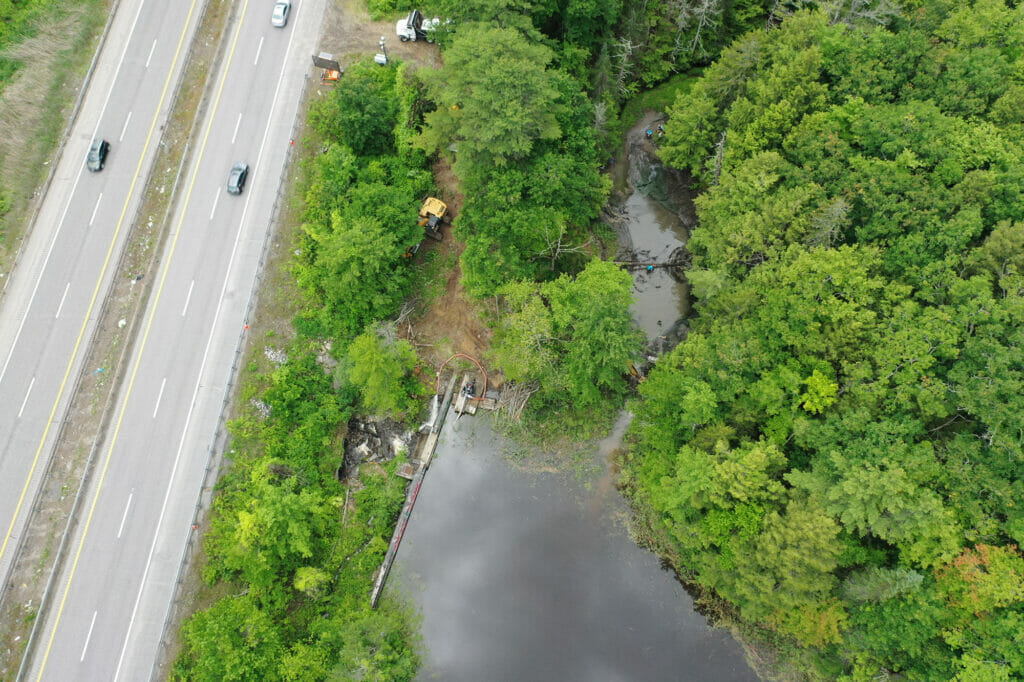
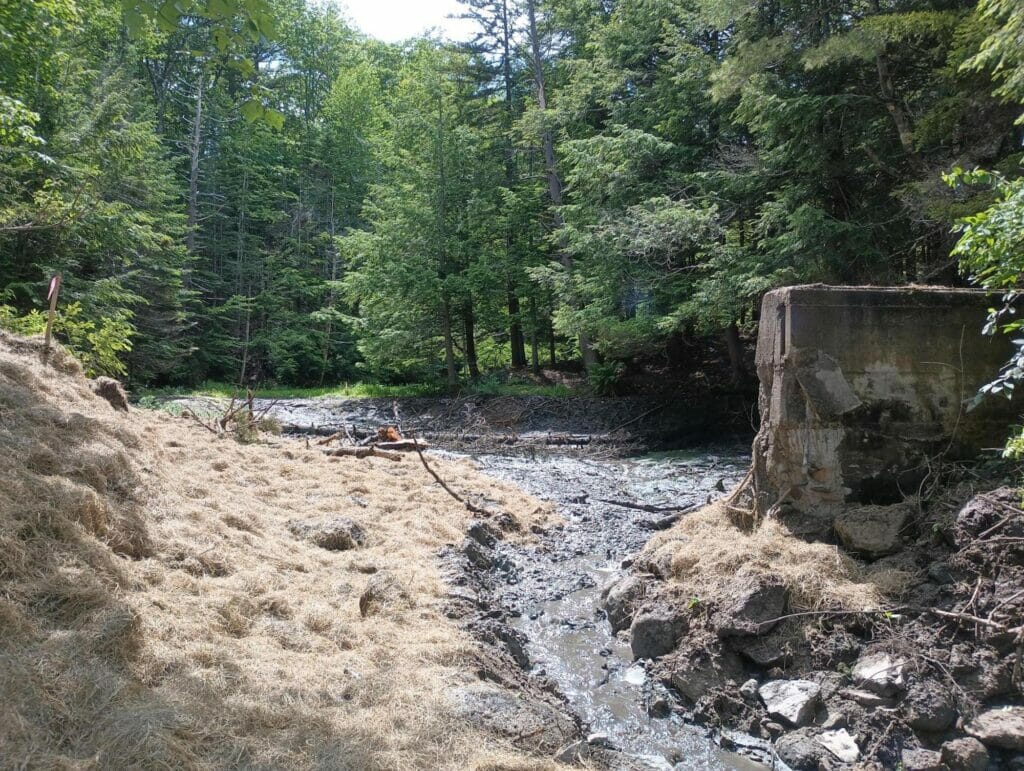
Sam Lambert, a Trout Unlimited volunteer, beamed as he reached into the muck with a hand net and pulled out a silvery 9-inch trout.
“We need a bucket with clean water!” someone shouted.
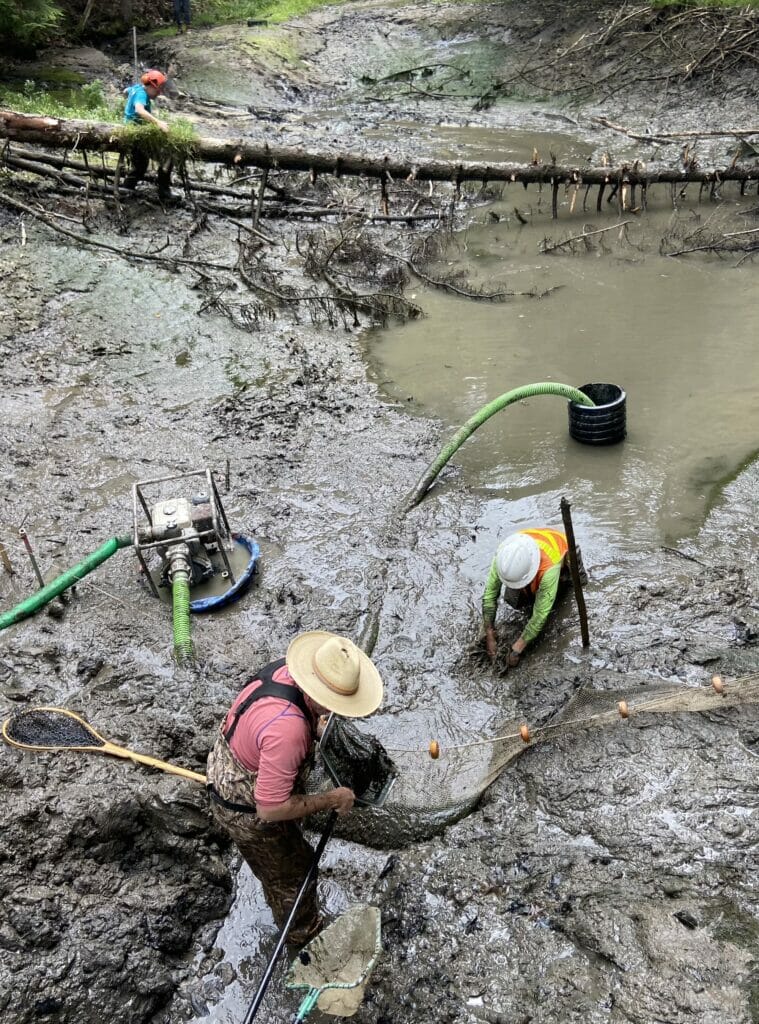
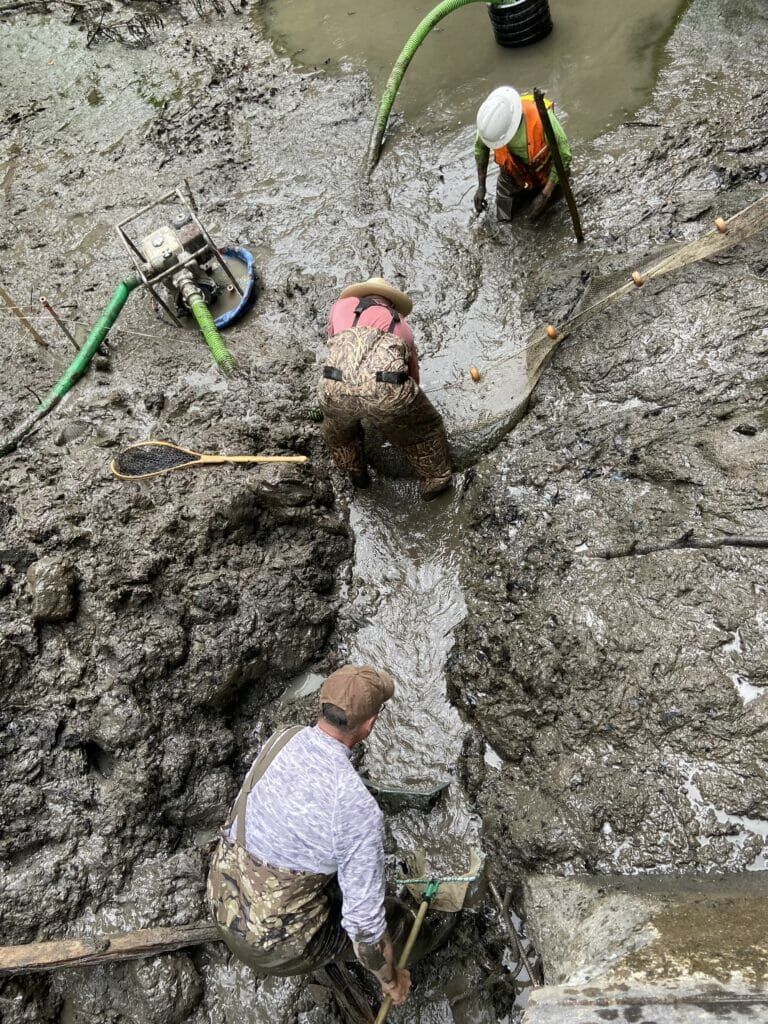
Salters and brook trout swim free
The small dam was one of three on the Frost Gully Brook system, which flows through a mix of public land and private property just a short distance from the L.L.Bean flagship store and the rest of the retail mecca that is downtown Freeport. The brook is a tributary to the Harraseeket River, which flows into Casco Bay.
In the works for several years, the project to remove all three dams completely opens the small, spring-fed stream for the first time in more than 100 years.
The work will benefit brook trout in stream reaches above the dams and also open the entire stream to a unique type of brook trout called salters, which move between freshwater and saltwater estuaries.
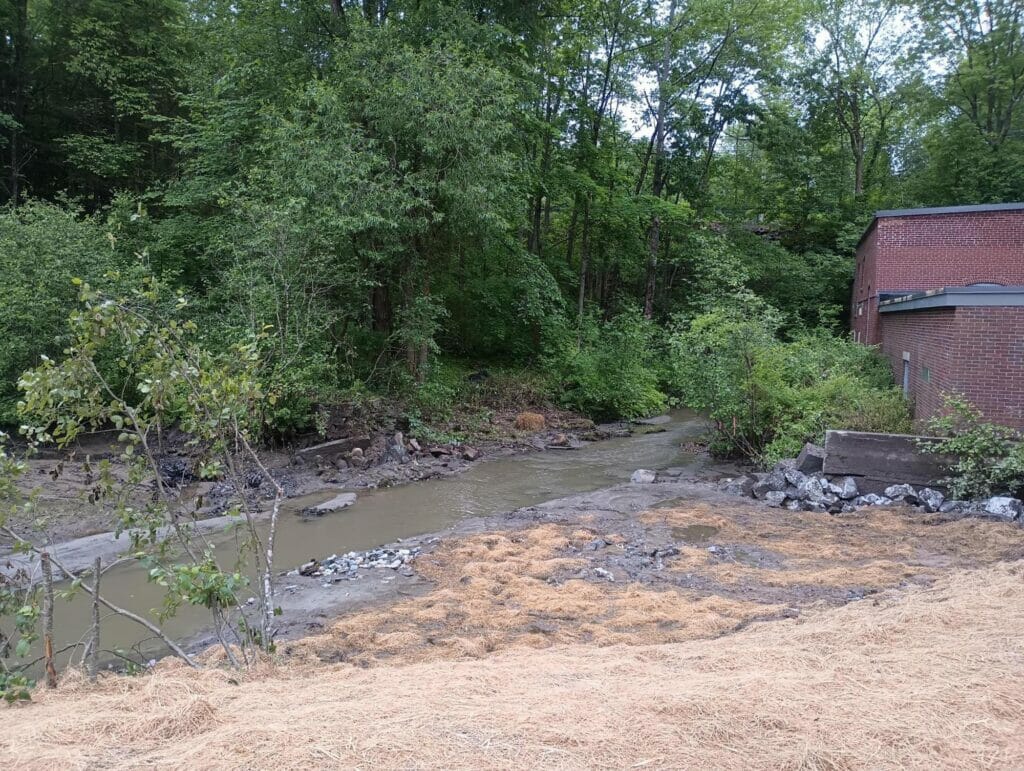
As Carrie Kinne of the Freeport Conservation Trust watched the lowermost dam come down on the first day of the work, she was thrilled.
“Just the sound of the stream flowing,” she said about the moment. “That was the first thing that really resonated with me.”
How this dam removal came to fruition
The project got its start nearly eight years ago when TU-affiliated volunteers undertook an ambitious project to document the presence of salter brook trout in dozens of coastal streams in Maine.
Using hook and line, volunteers plied the streams in search of trout. The method wasn’t exactly scientific but catching brook trout served as an impetus for further surveys of the waters to confirm trout presence.
The angler crews found brook trout in dozens of streams. A few, including Frost Gully Brook, were prioritized for restoration work. Frost Gully Brook, Branch Brook and the Ducktrap River are among TU’s designated Priority Waters in Maine.
Frost Gully Brook features a combination of factors that make it appealing for restoration work.
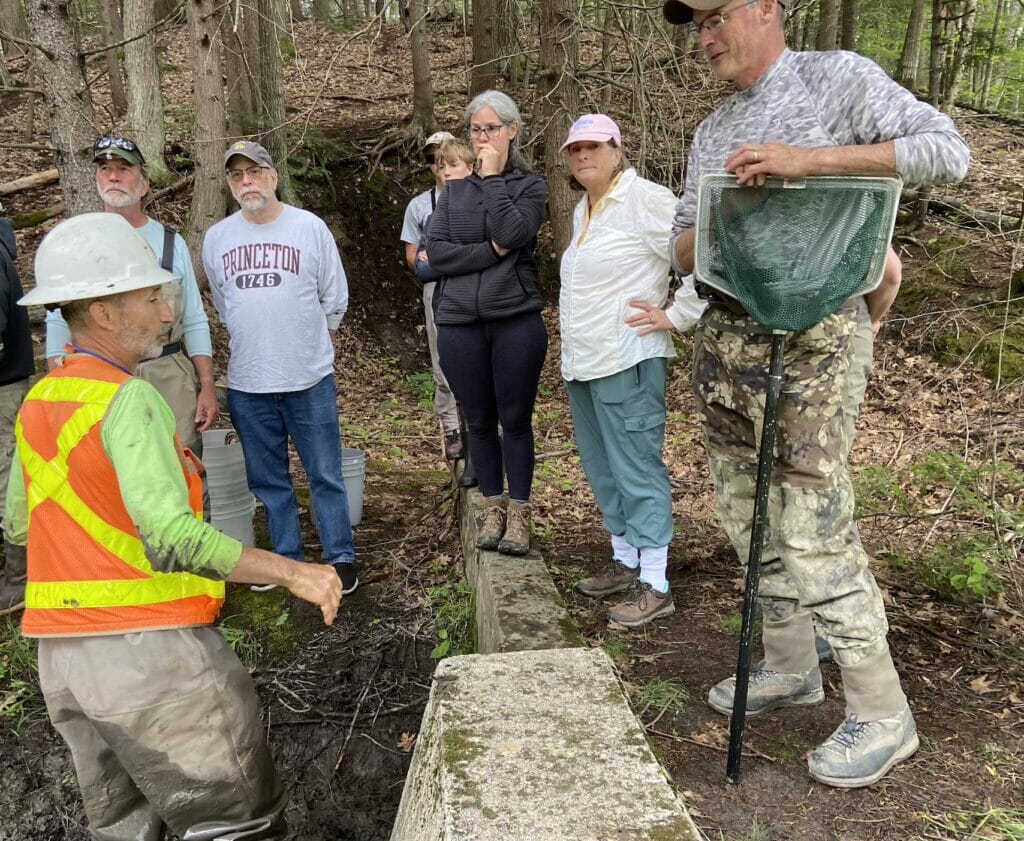
The three small dams, once used for water supply, were no longer serving their original purposes and had long been decommissioned. And, with two on land open to the public and crisscrossed by hiking trails, restoration of the stream to a fully free-flowing state would also serve the interest of the public. Because the stream has ample groundwater influence, it will also be more resilient to rising air temperatures expected as the planet continues to warm.
Members of the Merrymeeting Bay TU chapter rallied around the project.
“This was easily eight years in the making,” said chapter president Jeff Bush. “The original survey project really reenergized our chapter.
“Before that it was just five guys sitting around a table at our meetings.”
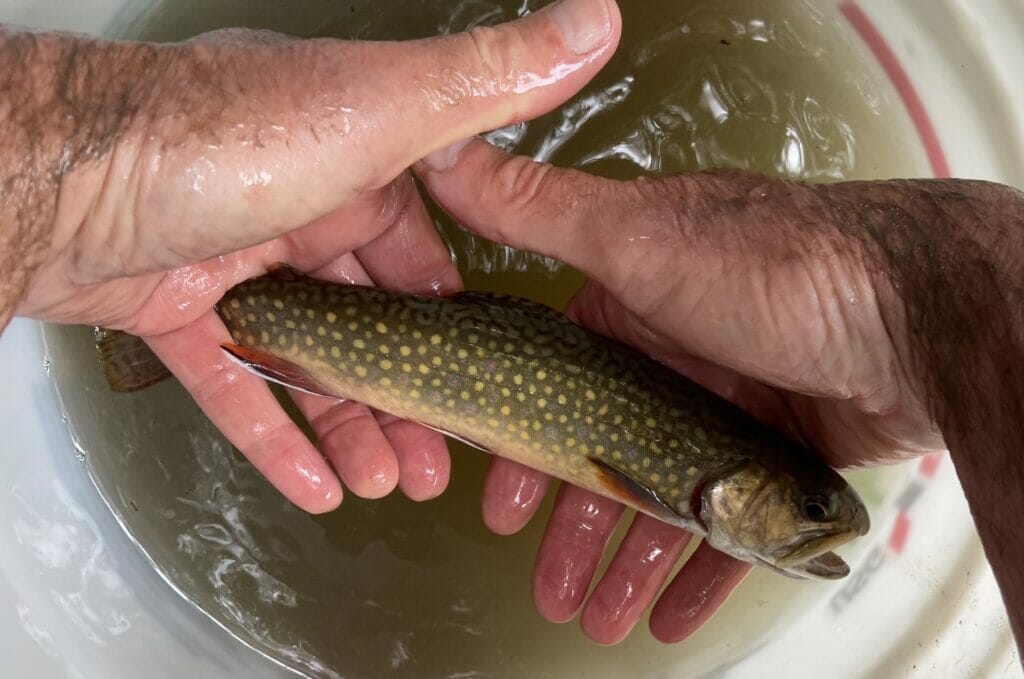
Planning, permitting, and obtaining funding took more than three years. The lead contractor was Alex Abbott, who also worked up the restoration plan after the TU staffer under which the project started took another job.
Funding for the Frost Gully Brook project was supported by the the Natural Resources Conservation Service, Avangrid Foundation, and U.S. Fish and Wildlife Service via a National Fish and Wildlife Foundation grant, along with additional funding from the Casco Bay Estuary Partnership, Maine Natural Resource Conservation Program, Maine Outdoor Heritage Fund, Patagonia, Richard King Mellon Foundation, and Sarah K. de Coizart Article TENTH Perpetual Charitable Trust. Additional support came from partner and landowner of two dams removed, Freeport Conservation Trust, as well as Maine Water, which was landowner for one of the dams removed.
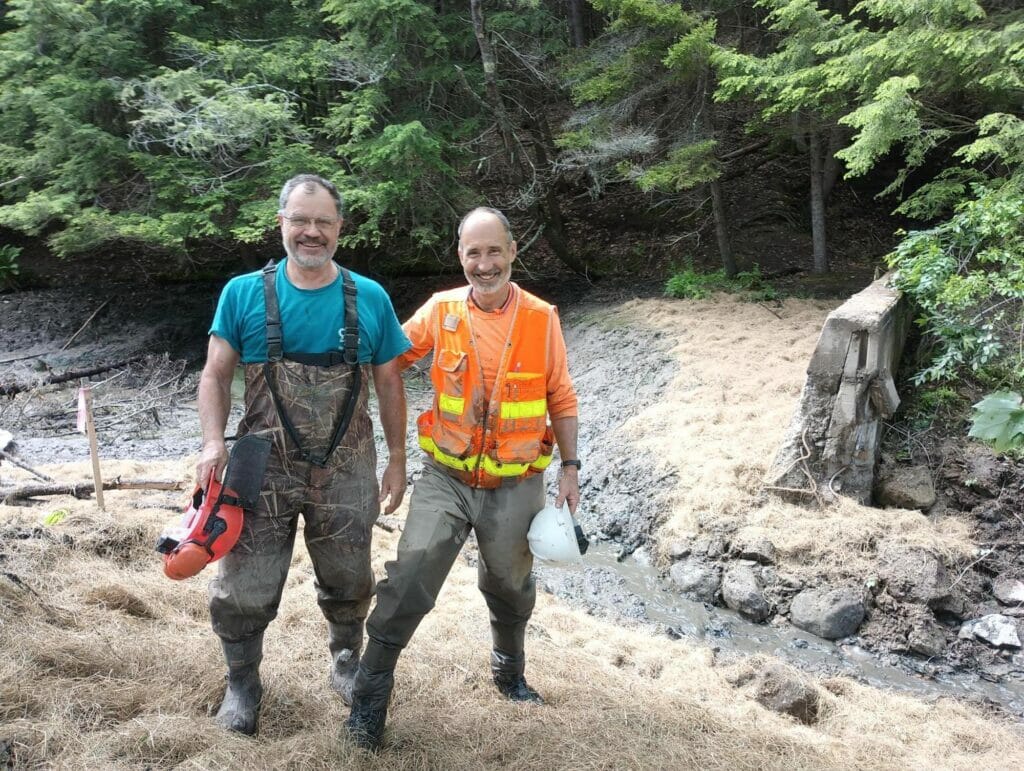
“I’ve spent several hundred hours here over the past few years,” Abbott said with a chuckle as his crew demolished a dam on a tiny tributary to Frost Gully Brook.
As is often the case, the prep work was the most difficult part of the effort. Once the actual demolition started, it didn’t take long.
Dam breach is quick once everything is in place
Under Abbott’s direction, workers with Skid Steer Services LLC used heavy equipment to break down sections of the three dams. As excavator operators kept cleaning up rebar and concrete after each dam was breached, volunteers readied to capture fish left behind.
Because decades of silt had piled up behind each dam, moving through the ponds as they drained was difficult, dirty work. The sloppy mud was 3 feet in some locations and volunteers had to strain mightily to move.
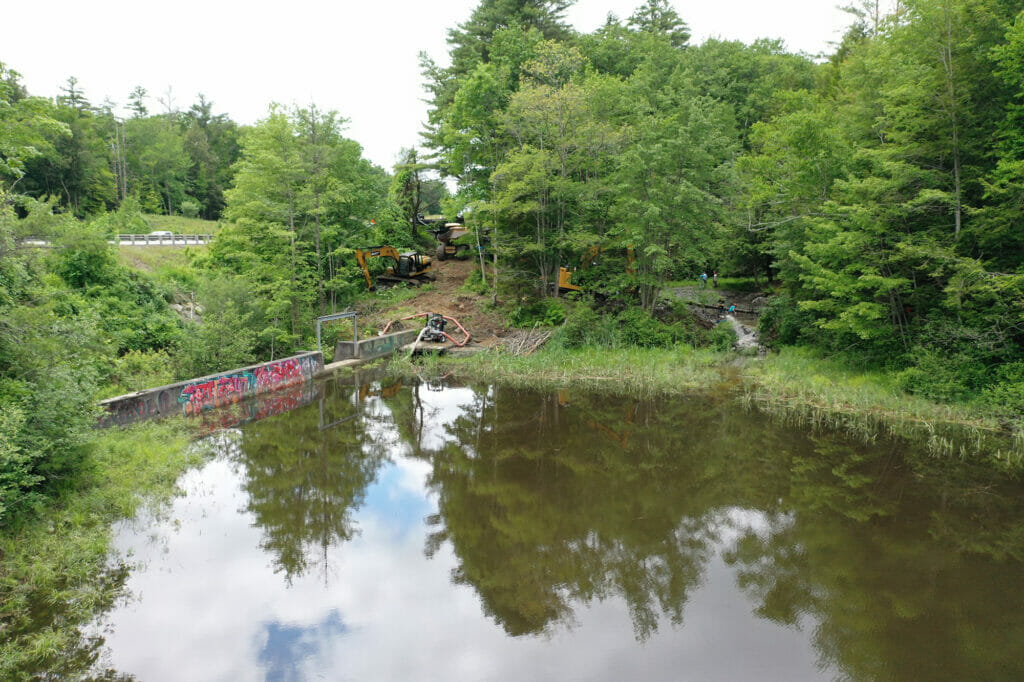
As the pond waters dropped, ripples showed where fish were moving. Volunteers scooped up dozens of trout, shiners and even a few American eels that had managed to get over dams during high water events.
The fish were moved to nearby, free-flowing sections of Frost Gully Brook.
Within a week, all three dams were gone. After the muck dries, the next phase of the project will address replanting the former pond sites with native vegetation.
TU will monitor the stream for several years to track how its trout respond to having full access to the creek.
“There were so many key partners in this effort, from the Merrymeeting Bay TU Chapter to the great lead contractor, Alex, to the Freeport Conservation Trust,” said Amy Wolfe, director of TU’s Northeast Coldwater Habitat Program. “It was a true team effort, and a model of how diverse interests can come together to restore our waters.”
Abbott agreed.
“All projects such as these,” he said, “take many hands, heads and hearts to push through to completion.”



